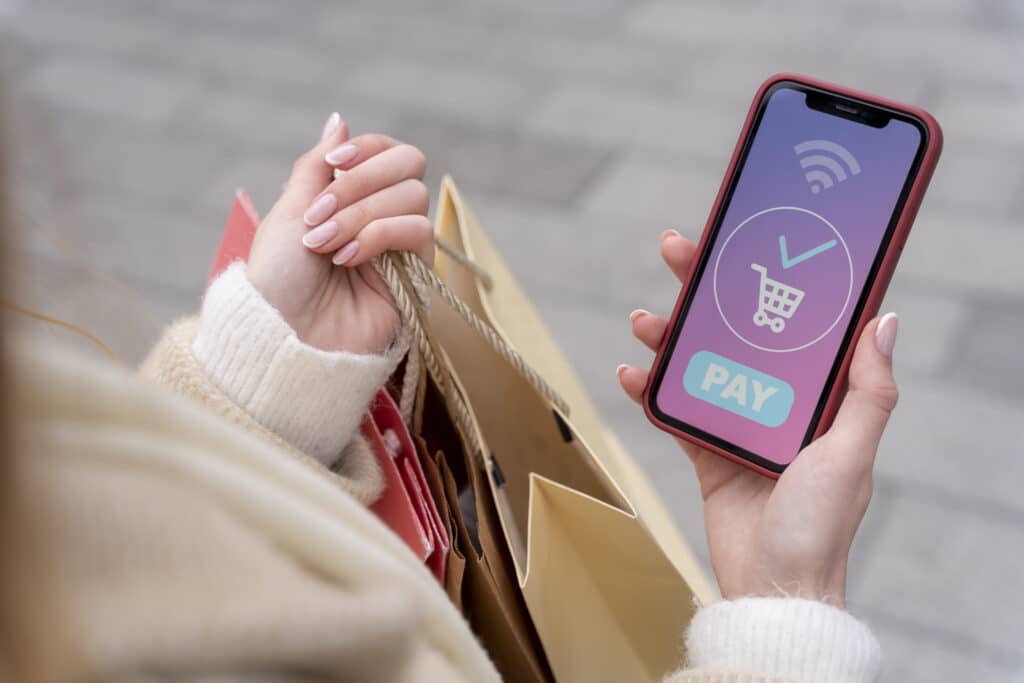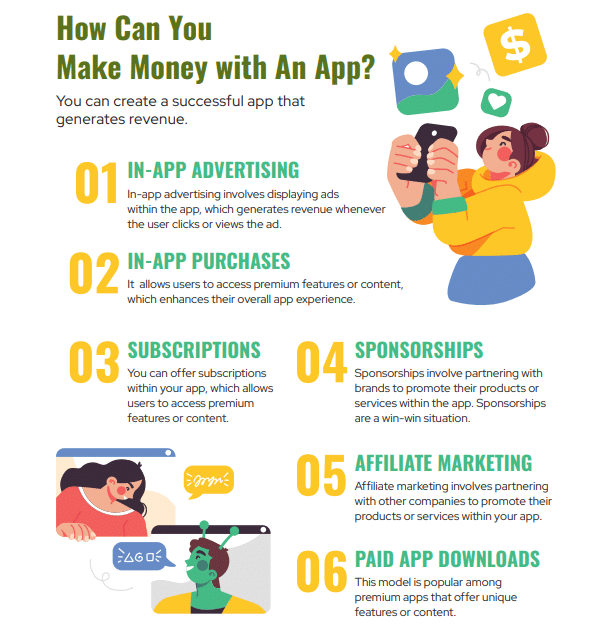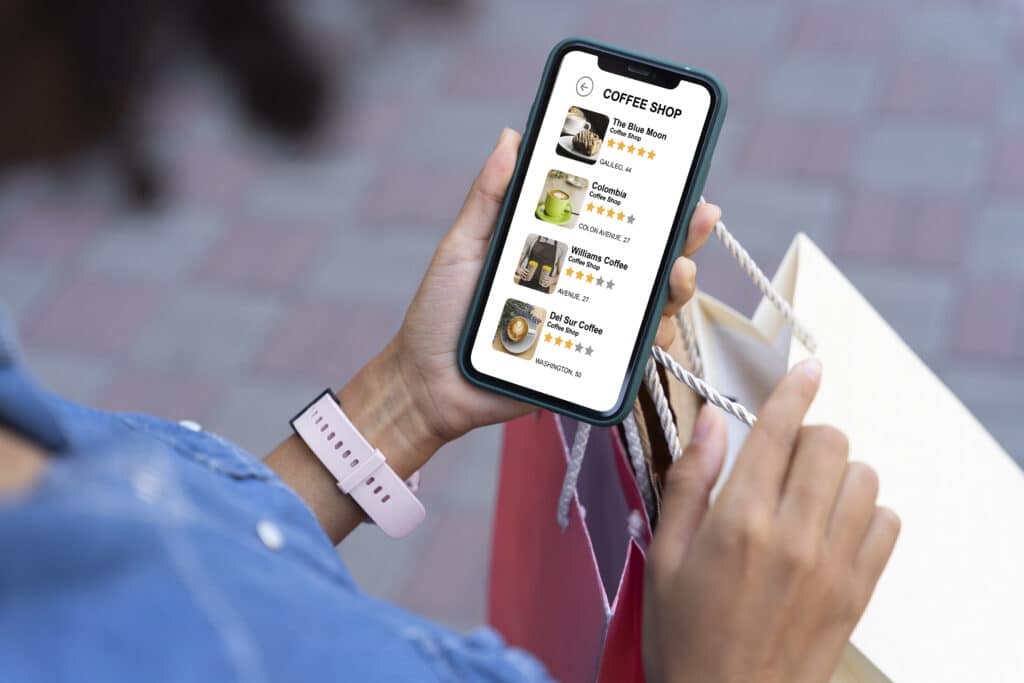What is an in-app purchase (IAP)?

Introduction
What is an in-app purchase (IAP)
Types of in-app purchases
Consumables purchases
Non-consumable purchases
Auto-Renewable Subscriptions
Non-Renewable Subscriptions
How to Spot In-App Purchases
There are two main groups of mobile apps — paid and free. With paid applications everything is quite simple — you buy an application with a full set of its functions and all the content. In this case, the revenue is distributed between the app store and its developers.
Free apps are different, when you come across free apps, you will most likely be dealing with apps that contain ads or apps with in-app purchases. The mobile app developers will almost always need to monetize apps eventually, this is because any good business idea needs to bring in money.

There are several ways to monetize — for example, in-app advertising, in-app purchases or a mixed option.
Most of the mobile apps on Google Play and the Apple App Store can be downloaded for free. This is known as the freemium model, where the app is free to download and use, but users can purchase additional features or digital goods through in-app purchases.
The advantage of the freemium model is that it allows developers to reach a wider audience by removing the barrier to entry of a paid app. It also allows users to try out the app before committing to a purchase.
However, developers need to ensure that the free version of the app offers enough value to keep users engaged and interested, while also providing enough incentives for users to make in-app purchases.
It’s worth noting that not all apps follow the freemium model, and there are still many apps on both app stores that are paid upfront or rely solely on advertising revenue. Ultimately, the monetization model used by an app will depend on the type of app, the target audience, and the developer’s goals.
In the world of mobile apps, in-app purchases (IAPs) have become an increasingly popular way for app developers to monetize their products. In-app purchases account for 48.2% of mobile app earnings as compared to 14% from ads-based revenue and 37.8% from paid app downloads. Another interesting fact, iOS users tend to spend more on in-app purchases (IAPs) than Android users. According to some industry reports iOS users tend to spend nearly 2.5 times as much as Android users, with an average monthly spend of $1.08 per user, per app compared to $0.43 per user, per app on Android.
There are several factors that may contribute to this difference. One is that iPhone users tend to have higher incomes on average than Android users, which may make them more likely to spend money on digital goods or services. Additionally, iOS devices are generally more expensive than Android devices, which may suggest that iOS users are more willing to spend money on mobile technology in general.
Another possible explanation for the difference in IAPs spending amount is that iOS users tend to have a more seamless and streamlined purchasing experience, with features like Touch ID and Apple Pay making it easier for users to complete transactions quickly and securely. In contrast, Android users may face more friction in the purchasing process, which could discourage them from making IAPs.
Overall, it’s important for developers to consider these differences when designing and implementing their monetization strategies. While iOS users may represent a more lucrative market for IAPs, it’s also important to ensure that Android users are not being neglected or underserved. Developers may need to adjust their pricing and marketing strategies to appeal to the unique characteristics of each platform and user base.
So, what exactly is an in-app purchase, and how does it work? In this article, we’ll provide an introduction to the concept of in-app purchases, including what in-app purchases meaning, how they are used, and some of the benefits and drawbacks of implementing them in an app.
Whether you’re an app developer or just a casual app user, understanding the basics of in-app purchases is essential for making informed decisions about which apps to download and how to use them. So let’s dive in and explore the world of in-app purchases!
What is an in-app purchase (IAP)
An in-app purchase (IAP) is a type of transaction that takes place within a mobile app, allowing users to buy additional content or functionality. In other words, it’s a way for developers to offer users the option to purchase items or services within the app itself. This can include things like virtual goods (such as coins, gems, or power-ups in a game), subscription services (such as access to premium content), or even physical goods (such as merchandise or tickets).
This allows app developers to monetize their products beyond the initial purchase price or advertising revenue.

The payment for an in-app purchase is processed through the app store’s payment system (such as the Apple App Store or Google Play Store). App stores typically take a percentage of the revenue generated from in-app purchases, with the remaining revenue going to the app developer. In-app purchases have become a popular way for app developers to generate revenue and offer users a way to enhance their app experience.
When browsing or searching for apps in the app store, users can see whether an app offers in-app purchases by looking for the “Offers In-App Purchases” label, which appears next to the app’s title and icon. Offers In-App Purchases meaning that the app includes features or content that can be purchased within the app, beyond the initial purchase price.
In the app store, users can also view the details of an app’s in-app purchases, including the types of purchases available, their prices, and any recurring subscription fees. The availability of in-app purchases in an app can be an important factor for users when deciding whether to download or purchase an app, and for app developers looking to monetize their products.
When you start using the app, you usually see a pop-up message about an in-app purchase with a full explanation of all the benefits and bonuses when making it. A common way to attract users to an in-app purchase is a trial — a free trial period during which you will be able to evaluate the functionality and then continue to use all the app features, but for a fee, or cancel your subscription.
It is very important to organically add a notification which brings the user to the moment of the in-app purchase after they have already used the app for some time. A common mistake is to ask the user to make an in-app purchase as they open the app for the first time. Think about it, instead viewing the apps interface and features the new app user receives a notification about premium access. Most likely, this will have a negative effect, because, logically, the new user installed a free mobile app and instead of being able to use it, they get a price list for premium access. This will most likely result in a negative first impression, and the new user deleting the app.
Types of in-app purchases
There are four types of in-app purchases — Auto-Renewable Subscriptions, Non-Renewable Subscriptions, Non-consumable purchases, and Consumable purchases.
Consumables purchases
In the context of in-app purchases (IAPs), “consumables” refers to a type of digital good or service that can be purchased within an app and used up or consumed over time. Examples of consumables include virtual currency, game lives or energy, and premium content or features that expire after a certain period of time.
When users purchase a consumable in-app, the item is typically delivered immediately and can be used within the app for a limited period of time. Once the consumable has been used up, users may need to purchase it again in order to continue using it.
Consumables are a popular type of IAP, especially for mobile games and other apps that rely on repeat purchases to generate revenue.
By offering consumables, developers can encourage users to make multiple purchases over time, while also providing an engaging and personalized experience within the app.
However, it’s important for developers to ensure that their consumables are implemented in a fair and transparent way, and that users are fully informed about the cost and benefits of each purchase. Developers should also consider the potential for user backlash or negative reviews if the consumables are perceived as overly expensive or unfair.
Non-consumable purchases
Non-consumable purchases refer to a type of digital good or service that can be purchased within an app and provides a permanent or long-lasting benefit to the user. Examples of non-consumables include premium content or features that do not expire, such as ad-free versions of an app, additional levels or game modes, or access to exclusive content.
When users purchase a non-consumable in-app, the item is typically delivered immediately and provides a permanent or long-lasting benefit to the user. Once the non-consumable has been purchased, it is usually available to the user for as long as they continue to use the app.
Non-consumables are a popular type of IAP, especially for apps that offer a more personalized or premium experience to users. By offering non-consumables, developers can provide users with additional value and incentivize them to make a one-time purchase that provides ongoing benefits.
Auto-Renewable Subscriptions
When users purchase an auto-renewable subscription, they are typically charged a recurring fee (e.g. monthly or yearly) in exchange for continued access to the premium content or features. The subscription will automatically renew at the end of each billing period unless the user cancels it.
Auto-renewable subscriptions are a popular type of IAP, especially for apps that offer ongoing value to users, such as streaming music or video services, news or magazine subscriptions, or online game services. By offering auto-renewable subscriptions, developers can provide users with ongoing access to premium content or features while also generating recurring revenue over time.
Developers should provide clear instructions on how to cancel the subscription if users no longer wish to continue with the service.
Non-Renewable Subscriptions
When users purchase a non-renewable subscription, they are typically charged a one-time fee in exchange for a specified period of access to the premium content or features. Unlike auto-renewable subscriptions, non-renewable subscriptions do not automatically renew at the end of the subscription period.
Non-renewable subscriptions are a less common type of IAP, but they can be useful for apps that offer limited-time access to premium content or features, such as online courses or e-books. Specifically, educational platforms commonly offer free basic study materials and provide the opportunity to purchase premium access to more comprehensive resources. For instance, AZ-900 Exam Dumps for Microsoft Azure courses provide premium content. These premium options cater to users seeking in-depth knowledge and preparation for specialized exams. By offering non-renewable subscriptions, developers can provide users with a time-limited opportunity to access premium content or features, while also generating revenue from the one-time fee.
Developers should also provide clear instructions on how to renew or extend the subscription if users wish to continue with the service beyond the initial subscription period.
How to Spot In-App Purchases
In-app purchases (IAPs) are often indicated within an app by specific icons or labels. Here are some common ways to spot IAPs within an app:
- Look for the “Free” label: Many apps with IAPs are available for free, so if you see an app with a “Free” label, there’s a good chance it includes IAPs.
- Look for the “Offers In-App Purchases” label: On both the Apple App Store and Google Play, apps with IAPs are required to display an “Offers In-App Purchases” label in their app listing.
- Look for specific icons or labels within the app: Once you’ve downloaded an app, you can usually spot IAPs by looking for specific icons or labels within the app itself. For example, some apps may use a shopping cart icon or a “Buy” button to indicate IAPs.
- Check the app description: Before downloading an app, be sure to read the app description carefully. Many apps with IAPs will mention them in the description, along with details about what the IAPs include and how much they cost.
- Pay attention to pop-up messages: Some apps will display pop-up messages when you try to access certain features, indicating that you need to make an in-app purchase to unlock them. By paying attention to these indicators, you can better understand whether an app includes IAPs and make an informed decision about whether or not to download it.
In order to make an in-app purchase, users typically need to enter their payment information into the app, such as a credit card or PayPal account. Once the purchase is made, the digital goods or services are typically delivered immediately within the app.
It’s important to note that not all apps offer in-app purchases, and even those that do may have different types and prices of IAPs available. Additionally, it’s important for developers to ensure that their IAPs are implemented in a way that is fair and transparent to users, and complies with any legal and regulatory requirements related to in-app purchases.
